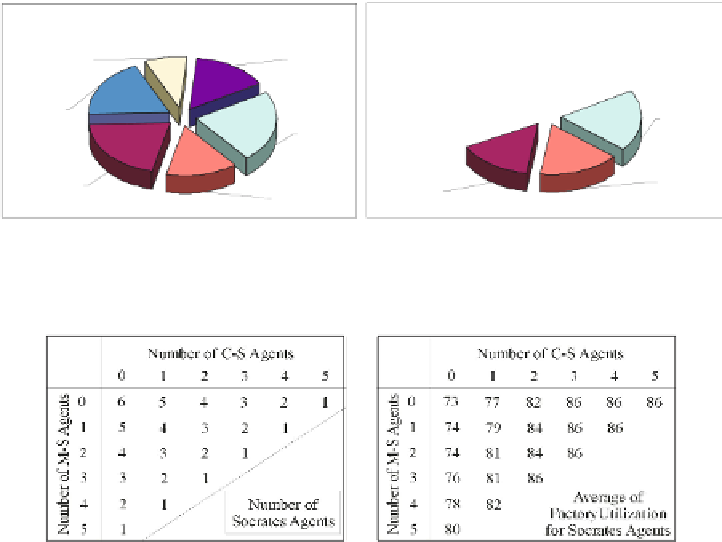Information Technology Reference
In-Depth Information
% Customer Orders Won
% Customer Orders Won
SCMAgent@
8%
Intuition
15%
Socrates
18%
ScrAgent
19%
GeminiJK
19%
Southampton
19%
KrokodilAgent
13%
ScrAgent
23%
Mr.UMBC
16%
Socrates
21%
FreeAgent
15%
KrokodilAgent
14%
(a)
(b)
Fig. 3.
Average percentage of customer orders won by each of the agents in (a) the quarter finals,
(b) the semi-finals
(a)
(b)
Fig. 4.
(a) Number of agents per game; (b) Factory utilisation of Socrates agents in respective
game
environment as SouthamptonTAC was using a strategy (initially used the day before
by another agent) which consisted of purchasing large quantities of memories by send-
ing RFQs on day 0 to all the suppliers of this type of component. The agents whose
RFQs were processed after the RFQs of SouthamptonTAC suffered from the lack of
this type of component for long periods since all of the suppliers' production capac-
ity was committed. As a result and since an agent is not allowed to change its strat-
egy during a round, Socrates did not qualify for the next round. This also had an im-
pact on the other agents. The overall results are shown in Fig. 1(b), 2(b) 3(b). The
top scoring agent of TAC SCM 2004 was FreeAgent, followed by Mr.UMBC and
UMTac-04.
5.2
Controlled Experiments
To evaluate the performance of our agent, in terms of factory utilisation, we ran a set
of controlled experiments (in a similar way to [10]) in which we included 3 types of
agents according to the way in which they order components:
•
Conservative-Strategy Agents (C-S Agents) which order in small quantities.
•
Massive-Strategy Agents (M-S Agents) which order large quantities in the beginning
of the game to guarantee production the rest of the game.


